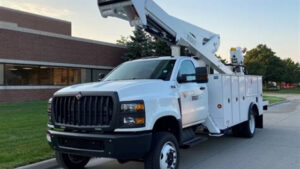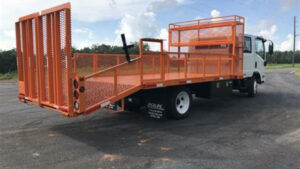If you’re planning to open a food truck, one of the most important decisions you’ll make is how to layout the interior. A well-designed layout can make meal preparation more efficient, improve customer experience, and even help your truck stand out from the competition. But with limited space, it’s essential to make the most of every square inch. In this article, we’ll discuss the different design strategies and considerations you should keep in mind when planning your food truck’s layout.
The Importance of a Good Food Truck Layout
When it comes to operating a successful food truck, having a well-designed layout is vital. A good layout not only helps you serve more customers faster but also attracts new customers and sets a professional and organized tone for your business.
1. Understanding Your Menu
The first step in creating a good food truck layout is to fully understand your menu. Determine the types of food you’ll offer, the equipment you’ll need, and the amount of storage space required. This information will help you design a layout that is both functional and efficient.
2. Choosing the Right Equipment
When it comes to equipment, your needs will vary depending on your menu. While it might be tempting to buy the latest and greatest equipment, it’s important to choose items that you actually need. Not only will this save you money, but it will also free up valuable space in your truck.
3. Efficient Service Windows
Efficient service windows are crucial for any food truck layout. Your window should be in a location that allows for easy access for both the customer and the server. It should also be large enough to accommodate multiple customers at once, while also providing a clear view of the food being prepared.
4. Creating a Flow
When designing your layout, it’s important to create a flow that allows for maximum efficiency. In other words, you want to design your kitchen in a way that reduces steps and eliminates any potential bottlenecks. This will help you serve customers quickly and keep your operation running smoothly.
5. The Importance of Storage
Storage is an important consideration for any food truck layout. You’ll need to store everything from food to utensils to cleaning supplies. Make sure you have plenty of storage space and that it is organized in a way that allows for easy access.
6. Designing for Ventilation
Proper ventilation is a must for any food truck layout. This will help keep the kitchen cool and comfortable while also preventing the buildup of smoke and grease. When designing your layout, make sure to include proper ventilation systems that meet local codes and regulations.
7. Choosing the Right Flooring
The type of flooring you choose will depend on your budget and the types of food you’ll be preparing. Some popular options for food truck flooring include rubber, vinyl, and tile. Make sure to choose a flooring that is easy to clean and non-slip for safety purposes.
8. Consider the Aesthetics
The aesthetic appeal of your food truck can have a huge impact on your success. When designing your layout, make sure to incorporate your brand colors and logo in a way that is eye-catching and memorable. You can also add decorative elements, such as plants or artwork, to add a personal touch.
9. Safety First
Safety is always a top priority when operating a food truck. When designing your layout, make sure to include safety features, such as fire extinguishers and first aid kits, in easily accessible locations. You should also conduct regular inspections to ensure that all equipment is in good working order.
10. Flexibility
Finally, it’s important to design a layout that is flexible enough to accommodate different events and situations. For example, you might need to adjust your layout for a larger event or change your menu to accommodate a special request. Make sure your layout is adaptable and can meet any challenges that come your way.
Overall, a good food truck layout is essential for success in the industry. By considering factors such as menu, equipment, service windows, flow, storage, ventilation, flooring, aesthetics, safety, and flexibility, you can create a layout that is both functional and appealing to customers.
10 Essential Considerations for Designing the Perfect Layout for Your Food Truck
Food trucks are an excellent way to showcase your culinary skill and grow your business, but to be successful in this crowded market, you need to have a well-thought-out layout for your food truck. Here are ten essential considerations to keep in mind when designing the perfect layout for your food truck:
1. Kitchen Layout
The kitchen is the heart of your food truck, and it’s essential to make sure that it’s always functional. You need to ensure that all the necessary tools, utensils, and appliances are easily accessible, and there is enough room for your staff to move around comfortably. Arrange your workstation in a way that allows you to cook and serve orders smoothly.
2. Window Placement
The window placement of your food truck is critical as it will determine how you serve your customers. The window should be positioned in a way that allows you to reach your customers easily without any hindrance, ensuring that the customers are comfortable too.
3. Electrical Wiring and Generator
Your food truck needs an electrical power supply to run all the appliances, lights, and other systems smoothly. You should consider the generator’s size and placement, which will depend on your kitchen equipment’s power requirements.
4. Water Supply
Your food truck needs a water supply to wash your hands, utensils, and equipment. You need to ensure that you have enough water on board, or you could have a water supply for the food truck.
5. Storage Space
Your food truck should have sufficient storage space for both food and equipment. Make sure that you have enough storage space for your supplies and food ingredients and also keep in mind the storage of equipment such as pots, pans, and other utensils.
6. Signage and Branding
Your food truck needs to have excellent branding to attract and retain customers. You should have a good frontage design, menu board, and other branding designs to make your food truck stand out from the crowd.
7. Lighting
Food trucks often operate in the evenings and at night, so proper lighting is essential to make sure your customers can see what they are ordering or what the menu is. You need to ensure that your food truck’s lighting is adequate and bright enough to keep your food truck visible.
8. Ventilation and Exhaust System
The kitchen appliances generate a lot of heat, and your food truck will also produce cooking smells, which can be uncomfortable for your customers. To avoid such issues, your food truck should have proper ventilation, exhaust systems, and fans installed to ensure the kitchen area’s temperature remains comfortable.
9. Safety and Security
The safety of your customers, staff, and the food truck itself should be paramount. Your food truck should have sufficient fire extinguishers, first aid kits, and fire suppression systems installed. You should also consider installing security cameras to keep your food truck safe from theft and vandalism.
10. Mobility
Lastly, mobility is a critical factor for any food truck. You should understand the routes and locations where your food truck will operate. To ensure that your food truck can get to its destination on time, it’s essential to keep your vehicle well-maintained and serviced properly.
In conclusion, designing a food truck layout takes time and careful planning, but by keeping the above considerations in mind and taking your time, you will end up with a food truck that not only functions well but also stands out from the crowd.
Choosing the Perfect Layout for Your Food Truck
One of the most important decisions you will make as a food truck owner is choosing the perfect layout for your mobile kitchen. Your layout will determine how efficiently you work in your truck, how much space you have for storage and equipment, and how your customers interact with your business. Here are five subheading to consider when choosing a layout for your food truck:
1. Single Window Layout
The single window layout is the most common design for food trucks. It features a single window on one side of the truck where customers can place their orders and pick up their food. This layout is ideal for small operations with limited menus.
If your menu is limited, a single window layout can be an efficient use of space. You can have all your equipment and storage on one side of the truck, leaving the other side open for customer service and preparation. However, if you have a larger menu, a single window layout may not provide enough space for all your cooking equipment and storage.
2. Double Window Layout
The double window layout features two service windows on either side of the truck. This design is ideal for busy food trucks that need to serve customers quickly and efficiently.
If you have a larger menu and need to serve more customers, a double window layout can be a good option. You can have one window dedicated to orders and another for pick-up, which can help you to manage your workflow and minimize wait times for customers.
3. Walk-Through Layout
The walk-through layout features a door on one side of the truck that customers can enter and exit through. This design allows customers to walk through the truck and see all of the cooking equipment and food preparation areas.
| Advantages of Walk-Through Layout | Disadvantages of Walk-Through Layout |
|---|---|
| Allows customers to see all food preparation areas | May be difficult to navigate for customers with mobility issues |
| Creates a more open and inviting atmosphere | Requires more space for customers to move around inside the truck |
| Can help to attract new customers and generate buzz | Requires additional safety measures to prevent customers from interfering with food preparation |
If you want to create a more open and inviting atmosphere for your customers, a walk-through layout can be a good choice. However, this layout may not be practical for all types of food trucks, as it requires additional space and safety measures to prevent customers from interfering with food preparation.
4. Hybrid Layout
The hybrid layout combines elements of multiple layouts to create a custom design that meets your specific needs. This type of layout can be a good option if you have a unique menu or workflow that doesn’t fit neatly into a pre-designed layout.
A hybrid layout can allow you to maximize your space and create a more efficient workflow, while still providing a great customer experience.
5. Custom Layout
If you have a specific vision for your food truck that doesn’t fit into any pre-designed layout, you may need to create a custom design. This option can be more expensive and time-consuming, but it can also result in a truly unique and personalized food truck.
| Advantages of Custom Layout | Disadvantages of Custom Layout |
|---|---|
| Allows you to create a truly unique truck | Can be more expensive and time-consuming |
| Gives you complete control over the design and layout | May require more specialized knowledge of food truck design and construction |
| Can help to create a strong brand identity for your business | May not be practical for all budgets and timelines |
A custom layout may be necessary if you have a specific vision for your food truck that can’t be achieved with pre-designed layouts. However, this option can be more expensive and time-consuming, and may not be practical for all budgets and timelines.
Sorry, the given list [“”] does not provide enough information for a relevant or related link to an article about “layout food truck”. Please provide more specific keywords or information to work with.
Thank You for Stopping By and Checking Out Our Layout Food Truck
We hope you found some helpful inspiration and ideas for your next food truck layout. Remember, there is no right or wrong way to design your mobile kitchen, as long as it works for you and your culinary creations. If you want to stay up to date with the latest food truck trends and ideas, make sure to bookmark our page and visit us again soon. And as always, we welcome your feedback and suggestions on our content. Thanks again for reading!


